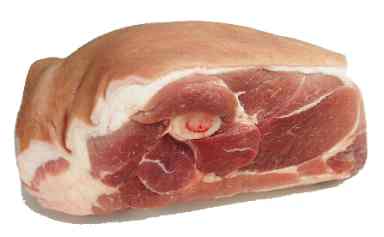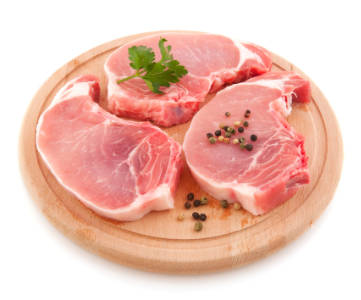All Ingredients
pome Fruit
The family of pome fruits include apples, pears, quinces, Asian pears, and loquats.
Learn morepomegranate
Cut through the pomegranate's leathery skin, and you'll find hundreds of pretty kernels, each with a tiny seed surrounded by ruby red pulp. You can eat the kernels, seeds and all, and they're great as garnishes or sprinkled in salads. You can also press the kernels for juice and strain out the seeds. Wear an apron when working with pomegranates; the juice can stain your clothes. They arrive in markets in the late summer and early fall.
Learn morepomegranate juice
Don't confuse this unsweetened juice with grenadine, which is a heavy, sweet syrup. Look for it in health food stores and Middle Eastern markets. Knudsen is a well-regarded brand.
Learn morepomegranate molasses
This tart Middle Eastern syrup became trendy a few years ago when Western cooks discovered that it adds zing to meat glazes, sauces, and soups. It also makes a wonderful topping for ice cream, and it can be mixed with soda water to make a tasty non-alcoholic drink. Look for bottles of it in Middle Eastern markets or gourmet stores. Store it in the refrigerator, where it will keep almost indefinitely. Don't confuse pomegranate molasses with grenadine, which is much sweeter.
Learn morepomegranate seeds
Bits of pomegranate pulp remain on the seeds as they dry, so they're a bit sticky and serve as a souring agent in Indian cuisine. The seeds also come ground.
Learn morepomelo
This has a very thick peel, so you have to work to get at the pulp. Many people think it's worth the trouble, for a pomelo is milder and sweeter than its closest substitute, the grapefruit.
Learn morePommeranzen bitters
This orange-flavored bitters is made in the Netherlands and Germany. It comes in red and green versions.
Learn morePont-l'Evêque
This ancient and well-regarded French cow's milk cheese isn't as stinky as other washed rind cheeses. It's best not to eat the rind.
Learn moreponzu sauce
Ponzu sauce is a dark tart lemon juice based sauce. It is usually made by combining soy sauce, lemon juice, vinegar and sometimes kelp, bonito flakes or mirin.
Learn morepopcorn
Air-popped popcorn is a terrific snack that's high in fiber and low in fat -- assuming that you don't add lots of butter and salt.
Learn morepopcorn rice
This rice is a cross between basmati and American long-grain. It can be found as a brown rice or a polished white rice. Common brands include Texmati, Delta Rose, and Cajun Country Popcorn. The name popcorn refers to the taste not the apperance.
Learn morepopcorn salt
This table salt has very fine grains, which adhere better to popcorn, potato chips, and French fries.
Learn morepoppy seeds
These tiny, nutty seeds are typically used in baked goods, but some cuisines also use them in savory dishes. Europeans prefer black poppy seeds, while Indians prefer white, but the two kinds can be substituted for one another. Since poppy seeds are high in fat, they tend to go rancid quickly, so buy small amounts and store them in the refrigerator. Consuming poppy seeds can result in a false positive on a drug test.
Learn moreporcini
Porcini mushrooms are well appreciated in Europe for their meaty texture and interesting flavor. If you can find them fresh, pick the largest caps you can find (or afford). Just wipe them clean before using; if you wash them, they'll soak up the water like a sponge. Dried porcini are also excellent.
Learn moreporgies
This category includes the scup = fair maid, sea bream, red porgy, sheepshead porgy, shad porgy, whitebone porgy, and jolthead porgy. Porgies tend to be bony, but they're highly prized for their delicate flavor.
Learn morePork
Years ago, cookbooks instructed readers to cook pork until it reached a scorching internal temperature of 180 degrees. Back then, the pork chops that landed on our plates were dry and leathery, and we often used lubricants like applesauce or sauerkraut to help get them down. After more careful research, food scientists now tell us that pork is safe to eat after it reaches an internal temperature of 160 degrees. At that temperature, pork can be juicy, tender, and flavorful.
Learn morepork arm picnic
Southerners like to use this fatty, bony cut to make barbecued pulled pork. It's also available boneless. This is also a good, economical cut to get if you want to make ground pork, kabobs, or stir-fry strips.
Learn morepork back ribs
These ribs are meatier than spareribs, but they're not as meaty as country-style ribs. Allow 2/3 pound per person.
Learn morepork blade roast
This somewhat fatty, economical roast is sold either bone-in and boneless. If you buy it as a bone-in roast, make sure that the butcher has cracked the backbone between the ribs so it's easy to carve. Country-style ribs are cut from this piece.
Learn morepork blade steak
These are cut from the Boston butt, and they're a cheap and flavorful alternative to pork chops. They're a bit too tough to fry, but they're wonderful if slowly braised.
Learn morepork butterfly chop
This is a thick chop taken from the loin eye which is cut almost in half so that it forms a butterfly pattern when opened on the hinge.
Learn morepork center loin roast
For many cooks, this lean and tender cut makes the best pork roast of all. One drawback is that it includes part of the animal's backbone, which adds flavor but can make the roast hard to slice after cooking. One solution is to ask your butcher either to cut off the bone and tie it back on or to cut through the backbone in several places so that you can easily slice the cooked roast into chops. If the backbone is removed and the ribs are "Frenched" or trimmed of meat, this cut is called a rack of pork. To make a crown roast of pork, get two racks and tie them into a circular crown. Your roast will be moister if the butcher doesn't trim the big slab of fat that usually comes with this cut. The roast will be moister if you cut the fat off after the roast is cooked. Steaks cut from this roast are called pork loin chops or pork rib chops.
Learn morepork chop
Pork chops usually turn out juicier if they're thick and if they're attached to bone. Several different cuts are called pork chops. The most tender and expensive ones are the pork loin chop and the pork rib chop. Next in the tenderness hierarchy are the pork sirloin chop, pork top loin chop, and the pork loin blade chop. Pork arm steaks and pork blade steaks are relatively tough and fatty, but they're very flavorful. They're better if they're braised rather than grilled, broiled, or fried.
Learn morepork country-style ribs
These have more meat than spareribs or back ribs, but they aren't as easy to eat with fingers. Allow 1/2 pound per person. They come boneless (pictured) or bone-in.
Learn morepork cube steak
This is a relatively tough cut of meat, often from the shoulder, that the butcher tenderizes mechanically.
Learn morepork cubes
These are cubes that are put on skewers for grilling. Don't confuse cubes for kabobs with pork stew meat, which is too tough to grill.
Learn morepork heart
Pork hearts are a bit smaller than veal hearts. They're best cooked using moist heat, say by braising them or cooking them in a stew.
Learn morepork kidneys
Like beef kidneys, these are too tough to cook using dry heat. It's best to cook them slowly using moist heat. To prepare them, first cut off the outer membrane, then cut them lengthwise to expose a white blob of fat in the middle, which should be discarded. Next, soak the kidney in acidulated water or buttermilk for about an hour. This will make the flavor much more mild.
Learn morepork leg
The meat from this part of the pig is usually made into hams, but fresh leg meat is lean and makes a terrific roast.
Learn morepork loin blade chop
These are cut from the blade roast, which is the part of the loin that's closest to the shoulder. You can grill, broil, braise, or panfry them. Don't confuse this cut with the pork blade steak, which is cut from the Boston butt and is fattier.
Learn morepork loin chop
This is distinguished by a T-shaped bone that's off to one side. It's a great chop to grill, broil, or panfry.
Learn morepork loin cuts
This is where we get the leanest and most tender pork cuts. Since they're lean, these cuts tend to dry out if overcooked. Pork is safe to eat if it's cooked to an interior temperature of 160 degrees. There are three main parts of the loin: the blade end, which is closest to the shoulder and tends to be fatty; the sirloin end, which is closest to the rump and tends to be bony; and the center portion in the middle, which is lean, tender, and expensive.
Learn morepork picnic shoulder
This comes from the lower part of the pig's shoulder. It's usually made into smoked hams, but fresh picnic shoulder makes for very juicy barbecued pulled pork.
Learn more





























































































































































































































































































































































